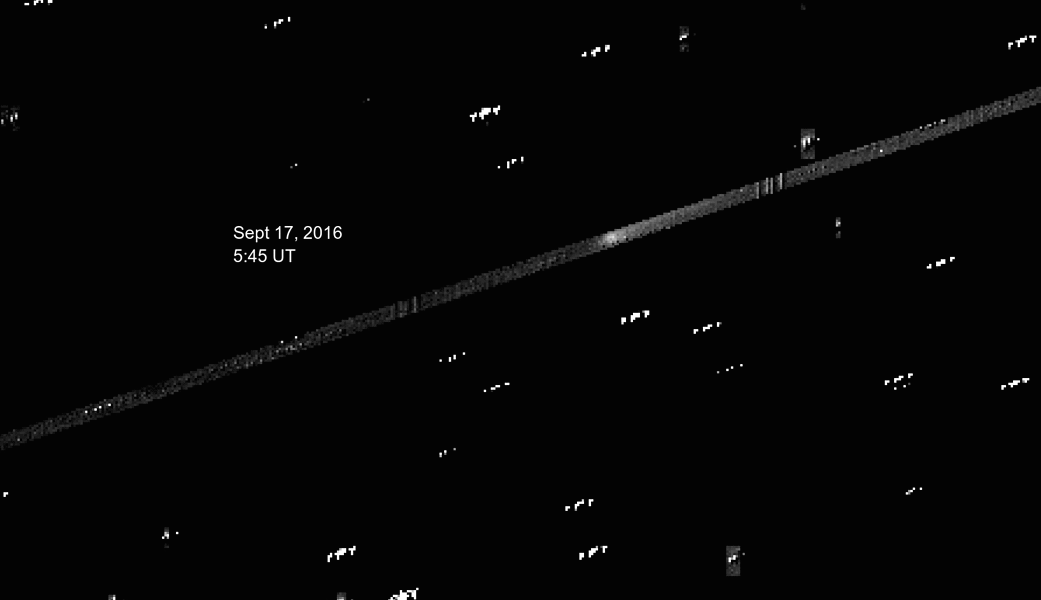Image credit: The Open University/C. Snodgrass and SETI Institute/E. Ryan
On Sept. 30, the European Space Agency concluded its Rosetta mission and the study of comet 67P/Churyumov–Gerasimenko. During the final month of the mission, NASA’s planet-hunting Kepler spacecraft had a unique opportunity to provide a ‘big picture’ view of the comet as it was unobservable from Earth: Ground-based telescopes could not see comet 67P, because the comet’s orbit placed it in the sky during daylight hours.
From Sept. 7 through Sept. 20, the Kepler spacecraft, operating in its K2 mission, fixed its gaze on comet 67P. From the distant vantage point of Kepler, the spacecraft could observe the comet’s core and tail. The long-range global view of Kepler complements the close-in view of the Rosetta spacecraft, providing context for the high-resolution investigation Rosetta performed as it descended closer and closer to the comet.
During the two-week period of study, Kepler took a picture of the comet every 30 minutes. The animation shows a period of 29.5 hours of observation from Sept. 17 through Sept. 18. The comet is seen passing through Kepler’s field of view from top right to bottom left, as outlined by the diagonal strip. The white dots represent stars and other regions in space studied during K2’s tenth observing campaign.
As a comet travels through space it sheds a tail of gas and dust. A comet’s activity level can be obtained by measuring the reflected sunlight. Analyzing the Kepler data, scientists will be able to determine the amount of mass lost each day as comet 67P travels through the solar system.
NASA Ames manages the Kepler and K2 missions for NASA’s Science Mission Directorate. NASA’s Jet Propulsion Laboratory managed Kepler mission development. Ball Aerospace & Technologies Corporation operates the flight system with support from the Laboratory for Atmospheric and Space Physics at the University of Colorado in Boulder.
For more information on Kepler and the K2 missions, go to:
For more information on Rosetta, go to:
Media contact:
Michele Johnson
Ames Research Center, Moffett Field, Calif.
650-604-6982michele.johnson@nasa.gov



























